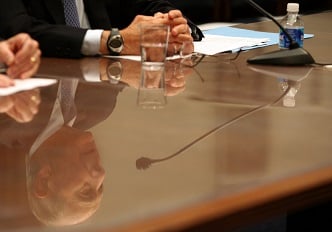A year and a half on from the wildfires that decimated Fort McMurray in northern Alberta, the Canadian P&C industry is still dealing with the fallout from the largest disaster to hit the market.
At the National Insurance Conference of Canada in Quebec City this month, experts involved in the insurance fallout from the fire got together in a panel to discuss the industry’s performance.
The panel included provincial and municipal emergency recovery experts, a claims VP for
Intact, and was moderated by Bill Adams, VP for Western and Pacific at IBC.
The panel was posed the questions: “Are we getting it right in Fort McMurray? What have we done well to help those affected to rebuild their lives? And what can we do better for our customers next time?”
Search and compare product listings for insurance against a Natural Disaster from specialty market providers here
When the fires hit in May 2016, 2,000 structures were destroyed and almost 90,000 people were evacuated, including 19,000 who were unable to return for about a month.
The fire caused an estimated $3.8 billion in insured damage. And, as Adams said, many policyholders did not understand their insurance coverage.
Erin O’Neill, operations manager for the recovery taskforce in Wood Buffalo, said the industry got it right in terms of insurers and adjustors who had boots on the ground fast and were able to see the damage and speak with residents. Where things were bad, she said, was that some residents missed the entire construction season to restore their properties through administrative delays.
Shane Schrieber, managing director at the Alberta Emergency Management Agency, outlined the insurance response as: the good – the fact that the IBC was “in the room” for organising the response; the bad – the psychological harm he witnessed among the uninsured and underinsured residents; and the last one was a hypothetical … the ugly – “the total economic loss was $7 billion, but it could’ve been a loss in the tens of billions of dollars.”
For his part, Mike van Elsberg, deputy senior VP of western claims at Intact, said the insurance community had done “a pretty good job,” but admitted there were also areas for improvement.
The “remoteness” of the location and “getting out people in place” had been a challenge for insurers, he said
Outside the scope of insurance claims, however, van Elsberg said the area insurers could perhaps improve the most was in helping insureds deal with the emotional difficulty of a catastrophe like this.
“When your entire home and your family life has been disrupted, it’s … complicated,” he said. “We’ll never turn around the disaster, but how we support people… is where we need to focus.”
He said the company did actually offer counselling services through an external firm, but he didn’t see a lot of uptake. So in future, staff on the ground may need additional training – not to be counsellors, but to better understand and respond to the psychological toll on policyholders.
“We’re not a mental health agency and we don’t pretend to step into that space,” he explained. “But we do need to [better] educate staff on how to deal with people going through [this]. We need to teach our folks to be more aware of that emotional injury.
“Do we want to pay the claim and leave them behind, or do you want to become an advocate and help the customer? We need to better understand the emotional side.”
Related stories:
Climate change and insurance – communicating with your clients
Wawanesa: We could have done better in Fort McMurray


